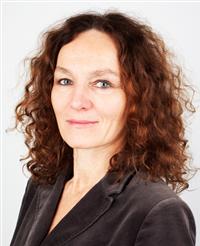Schools are opening all over the country this week, with lots of six-year-olds probably the most excited or anxious as they enter the first grade. Next year there may be more girls than boys, as authorities consider elementary school admission based on skills and maturity instead of strictly age.

No one wants to categorize six-year-old girls as smarter or more mature than six-year-old boys, but research and statistics show that “many boys don’t do as well in school,” according to Dr Camilla Stoltenberg, who leads Norway’s public health institute (Folkehelseinstituttet). “We see clear differences between boys and girls, where girls have developed more quickly regarding language and self-discipline.”
Stoltenberg recently led a government commission charged with finding out why a gender gap in Norwegian schools has been widening, and what can be done to narrow it. “As a researcher I had seen there was much more autism and ADHD among boys,” Stoltenberg told newspaper Dagens Næringsliv (DN) after her commission’s report was released. She also said she knew lots of “personal stories” about how boys simply seemed slower to learn than girls.
One of them involves her own “little brother,” Norway’s former prime minister from the Labour Party, Jens Stoltenberg, who’s now secretary general of NATO. “He didn’t learn to read properly until he was in the fourth grade and was 10 years old, he says so himself,” she told DN. “Jens wasn’t very good in school and I still helped him with math when he was in high school. Boys just often get going a bit late. When he was 20, he’d become very good at school and was studying social economics.”

While there’s hope for all, Norwegian authorities are concerned about the documented lag between many boys’ and girls’ academic development. “Gender differences pose a societal challenge that demand measures to address them,” Stoltenberg said when her commission presented its report and 64 proposals to help those who struggle in elementary school.
Among the proposals are pilot programs for a flexible school start. They’d be aimed at smooting the transition from Norway’s barnehager (day care centers and kindergartens) and could accelerate or delay admission into first grade. After months of debate, also within a divided commission, the idea is catching on.
“We want local governments to try out various models for flexible school start,” Education Minister Jan Tore Sanner announced just before schools were opening this week. Details remain sketchy, but Sanner described his call to test a flexible school start as “an attempt anchored in current models that make it possible to seek exceptions to the regulations (that call for all children in Norway to start school at age six).”
Embracing the Stoltenberg Commission’s report
Sanner, who represents the Conservative Party, was quick to embrace the Stoltenberg-led commission’s report last winter. “It worries me,” he told news bureau NTB at the time, “that many boys get poorer grades and end up dropping out to a greater degree than girls. It’s not a problem that girls do well, but the schools need to get better at helping boys do well, too.”
Newspaper Aftenposten has editorialized in favour of the project, writing that “it’s worth a try” to be more flexible when determining when a child is ready for school. One proposal involves turning a child’s first year at school into a “pre-school” of sorts, during which the child can move into the first-grade in accordance with teachers’ recommendations and dialogue with parents. Some children may spend their entire first year at school in the pre-school program.
Critics worry that boys especially may be branded as slow-learners, and that splitting up small children based on ability can lead to social and economic differences, also later in life. Elin Rødahl Lie of the Institute for Pedagogics at the University of Oslo, has claimed that the Stoltenberg Commission can “turn boys into losers” when they don’t deliver in line with a school’s expectations.
The commission’s report Nye sjanser – bedre læring (New chances – better learning) does indeed point out that girls “have a better understanding of language, get higher grades than boys in all courses except physical education,” and notes that “nearly 70 percent of all children who get (extra) teaching in elementary schools are boys.” Neither Stoltenberg nor Sanner are branding boys as losers, though, and instead want to nip any problems in the bud.
‘Inviting’ local participation
Norway’s education ministry is thus “inviting” local governments (which are in charge of local schools) to “try out various programs” for a more flexible school start. “Schools shall be prepared to receive all children,” Sanner stressed, “but at the same time, children have various starting points that can also be tied to when during the year they were born. Therefore we’re opening up for more flexible school start.”
He has the support of the Conservatives’ government partner, the Progress Party. “Not all children are ready to begin school when they’re six,” Roy Steffensen, a Member of Parliament for Progress who leads the parliamentary committee on education and research. “All children are different, some will manage to sit still and listen to a teacher, while others are restless and would rather play football.”
Progress supports liberalizing the regulations governing school start, according to Steffensen: “Some children would do well to start school a year earlier (than six), while other can do well to have an extra year in the kindergarten.”
Programs are thus likely to be ready for testing next fall, in conjunction with parents and tied to the transition from kindergartens. Sanner noted that cooperation and “good information” will help parents “make the right choice” for their child.
newsinenglish.no/Nina Berglund

